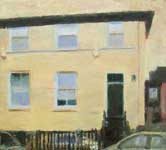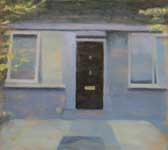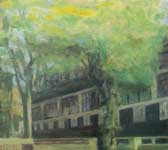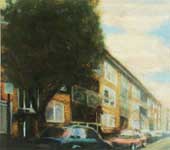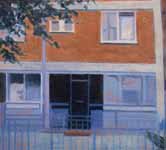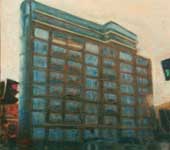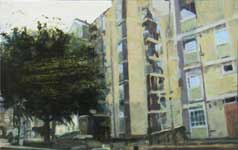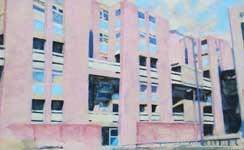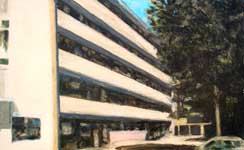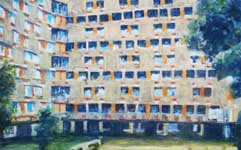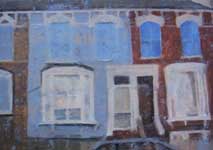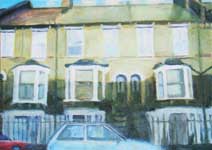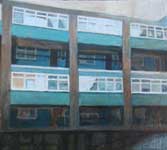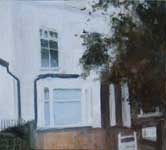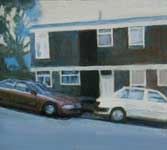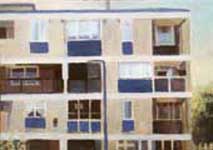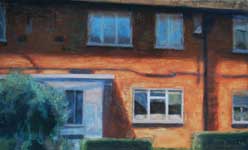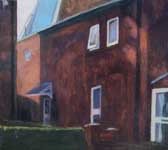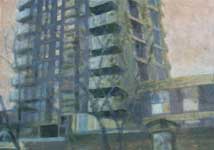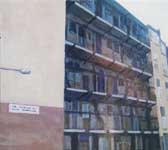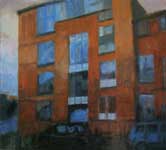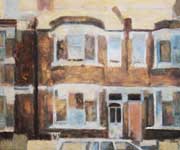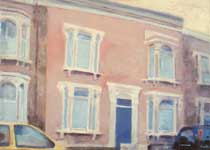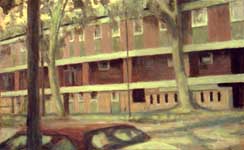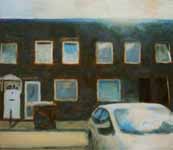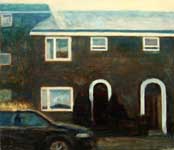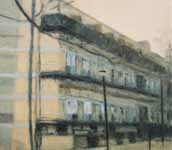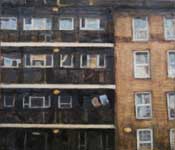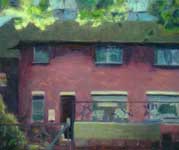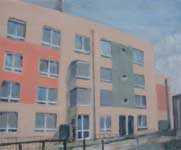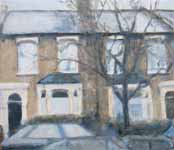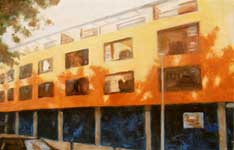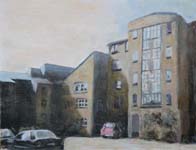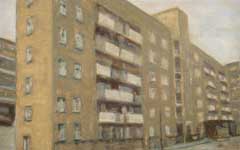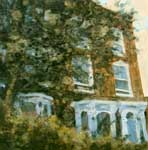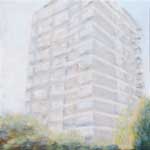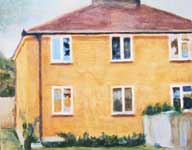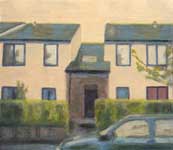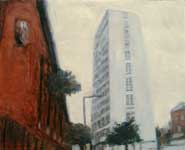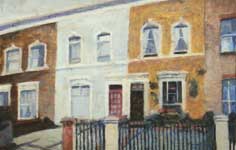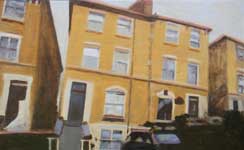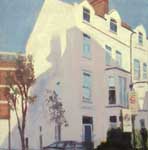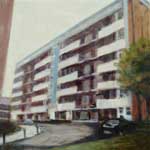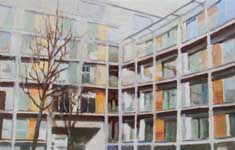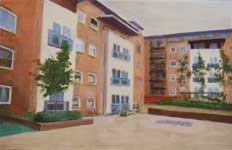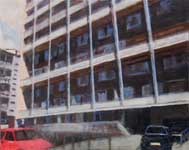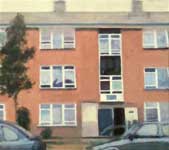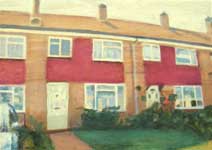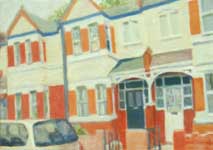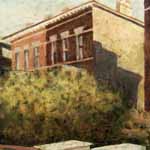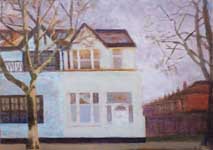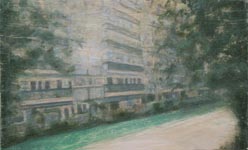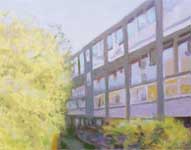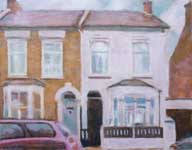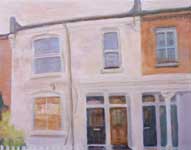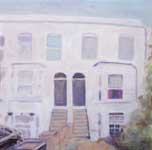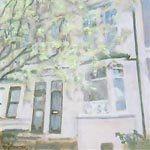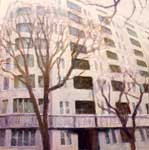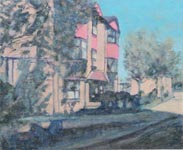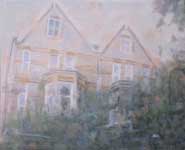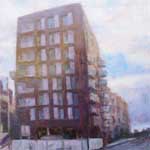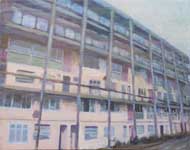A Place to Live
|
Article published in The Jackdaw, December 2014 My series of paintings, A Place to Live, are of the street view of houses in London. They began with a collection of images from estate agents property ads in newspapers that I had cut out and collected in a sketchbook. I liked the banality of these rather badly reproduced photographs. I have been painting everyday life in the city and the people around me on the streets for many years. As the sketchbook filled up with cuttings, these endless printed reproductions of houses and blocks of flats seemed to capture something familiar about the texture of the city. People I showed them to couldn’t really understand my fascination with them. They were small smudgy newspaper cuttings and they looked so ordinary. Which was probably what I liked. So they hung around in the sketchbook for a few years while I mulled them over from time to time, never really knowing how I was going to make paintings from them. Then one day I was talking with an artist friend who had been painting directly onto plywood using dammar varnish mixed with the oil paint. Her pictures were abstract and nothing like my own work, but the technique and material suddenly seemed to provide the answer for capturing the graininess of the images of the houses. I tried to use the minimum of paint in very thin glazes to maintain the texture of the wood, like using watercolour washes. The resulting paintings have this feeling of receding into the grain of the surface as if they were memories. The technique also dampens down the colour in a way which is very reminiscent of the weather and atmosphere of London. As I’ve gone on with the pictures I’ve become more and more interested in capturing the shifting variety of London light. For me, my paintings only really satisfy me if in some way they recall and intensify something powerfully familiar that I’ve felt and seen. The buildings that surround me every day are such a familiar backdrop to my life. As I pursued the series, it began to take on a more encyclopaedic nature. There are now over 60 paintings of different types of home, although they are not really about recording the architecture – more about visual sensations that have accrued over many years of living in an urban environment. It’s difficult to say why I chose each particular image, except to say that I found some visual peculiarity in the original cutting that interested me. I wasn’t interested in the locations or details of the properties. I was attracted to the naivety of the photograph or elements in it that undermined the idealising purpose of the original ads. Occlusions in vision provoke the eye. Bad weather, poor light, shadows and dazzle, visual obstructions, distorted perspectives and awkward camera angles. By these indirect means, I found that the paintings could convey the perplexity of my daily visual experience of the city. <
|
